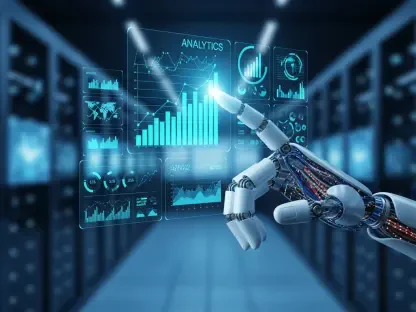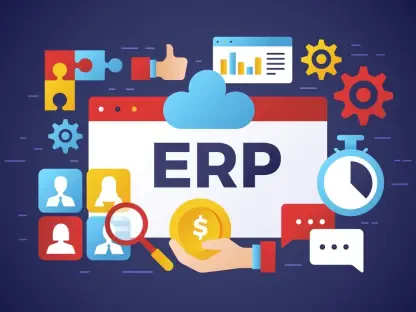The AI Boom: A New Engine for US Economic Expansion
Imagine a nation where economic growth hinges on lines of code and digital innovation rather than traditional industries, a reality that the United States is experiencing today as artificial intelligence (AI) emerges as a powerhouse driving GDP to new heights. The AI industry has transformed from a niche sector to a cornerstone of economic expansion, permeating every facet of business and society. Its rapid evolution and adoption across diverse fields have positioned it as a catalyst for prosperity, outpacing historical benchmarks of technological impact.
At the heart of this surge lie the remarkable advancements in AI technologies, from machine learning algorithms to generative models, which are now integral to sectors like healthcare, finance, and manufacturing. Companies are not merely experimenting but fully integrating AI into their core operations, boosting productivity and creating new revenue streams. Key segments such as AI infrastructure, software development, and corporate investment are fueling this momentum, with significant capital flowing into data centers, cloud computing, and specialized hardware.
Major players like NVIDIA and Microsoft are leading the charge, capitalizing on their expertise in AI hardware and software solutions. Their innovations, alongside emerging applications in autonomous systems and personalized services, underscore the sector’s transformative potential. As technological advancements continue to accelerate, the AI boom is not just a trend but a fundamental shift, redefining the economic landscape and setting the stage for sustained growth.
Economic Impact of AI on US GDP
Key Trends Fueling AI-Driven Growth
The ascent of AI as an economic driver is underpinned by several critical trends reshaping the business world. Corporate spending on technology infrastructure has skyrocketed, with firms prioritizing AI tools to enhance efficiency and competitiveness. This investment is not limited to tech giants; small and medium enterprises are also adopting AI solutions to streamline operations and tap into new markets, reflecting a broad-based digital transformation.
Emerging AI technologies, such as natural language processing and computer vision, are further propelling this growth by enabling novel applications across industries. Business models are shifting toward data-driven decision-making, with AI at the forefront of this change. The growing demand for tailored AI solutions, coupled with institutional interest from venture capital and government entities, creates a fertile ground for innovation and expansion.
Cross-industry adoption amplifies these effects, as sectors from agriculture to entertainment leverage AI for optimization and customer engagement. Opportunities for breakthroughs in areas like predictive analytics and automation are abundant, positioning AI as a linchpin of economic vitality. These trends collectively illustrate how deeply AI is embedded in the fabric of modern commerce, driving GDP through both direct investment and indirect productivity gains.
Data and Projections for AI’s Economic Contribution
Historical data paints a striking picture of AI’s impact on the economy, with technology investment contributing over one percentage point to real GDP growth for the first time. Insights from financial analysts indicate that this contribution has doubled in recent quarters, surpassing even the peak of the late 1990s tech boom. This milestone highlights the unprecedented scale of AI’s influence compared to past technological waves.
Looking ahead, projections suggest that this trajectory could persist, with tech spending expected to remain a dominant force in GDP growth from now through 2027. If current trends hold, AI-driven investments might continue to offset weaknesses in other sectors, acting as a buffer against potential downturns. However, sustaining this level of contribution will require consistent innovation and strategic capital allocation across industries.
The economic implications are profound, as a continued reliance on AI could reshape national priorities and resource distribution. Analysts caution that while the short-term outlook is robust, long-term stability depends on balancing tech investment with broader economic diversification. These forecasts underscore AI’s role as both a driver of growth and a variable requiring careful monitoring to ensure lasting benefits.
Challenges and Risks of AI-Driven Economic Growth
The meteoric rise of AI as a GDP contributor is not without significant challenges that warrant attention. Overreliance on technology investment poses a risk of economic imbalance, where other sectors may lag, creating vulnerabilities. If AI spending slows or fails to deliver expected returns, the broader economy could face abrupt setbacks, reminiscent of past tech-driven downturns.
Historical parallels to the 1998 Dot-Com Bubble serve as a sobering reminder of potential pitfalls. During that era, excessive optimism and speculative investments led to a sharp correction in 2001, dragging down GDP. A similar scenario could unfold if current AI investments are driven more by hype than by sustainable value, potentially leading to a speculative bubble that bursts under economic pressure.
Mitigating these risks requires a multifaceted approach, including diversified economic policies that support non-tech sectors and prudent investment strategies. Policymakers and businesses must prioritize resilience by fostering innovation in varied industries while tempering excessive enthusiasm for AI with realistic assessments of its long-term viability. Such measures can help cushion the economy against the volatility that often accompanies rapid technological shifts.
Regulatory Landscape Shaping the AI Industry
Navigating the AI boom also involves grappling with an evolving regulatory framework that shapes its trajectory. In the United States, current policies focus on data privacy laws and ethical standards to govern AI development and deployment. These regulations aim to protect consumer rights while addressing concerns over bias and transparency in AI systems, creating a complex compliance landscape for companies.
The impact of these requirements is significant, often slowing the pace of innovation as firms allocate resources to meet legal standards. Compliance can increase operational costs and delay product launches, particularly for smaller enterprises with limited budgets. Yet, these measures are essential for building public trust and ensuring that AI applications do not exacerbate social inequalities or infringe on individual freedoms.
Looking forward, potential regulatory changes could further influence corporate investment and industry growth. Discussions around stricter oversight or international harmonization of AI rules may reshape market dynamics. Government policies must strike a delicate balance between fostering innovation and safeguarding economic stability, ensuring that the AI sector thrives without compromising broader societal interests.
The Future of AI and Its Role in US Economic Growth
Peering into the horizon, the AI industry shows no signs of slowing down, promising to redefine economic growth in profound ways. Its long-term impact on GDP hinges on continued advancements and the ability to integrate AI into emerging domains. Technologies such as decentralized AI computing are poised to disrupt traditional models, offering scalable solutions that could further boost productivity across sectors.
Evolving consumer and corporate preferences are also shaping this future, with a growing appetite for AI-driven personalization and efficiency. Global economic factors, including competition from other nations investing heavily in AI, will influence the pace and direction of growth. Staying ahead requires the United States to maintain its edge through strategic partnerships and robust research initiatives.
Innovation remains the lifeblood of this sector, with potential market disruptors like quantum-enhanced AI on the cusp of realization. Areas for sustained economic expansion include smart infrastructure and AI-powered sustainability solutions, which could open new avenues for investment. As these developments unfold, AI’s role in driving GDP will likely deepen, provided challenges are addressed with foresight and adaptability.
Conclusion: Balancing Opportunity and Caution in the AI Era
Reflecting on the transformative journey of AI, it becomes evident that its boom has reshaped the US economic landscape with a historic push to GDP growth. Tech investment has emerged as a critical pillar, underscoring its importance to national stability during a time of rapid change. The dual nature of opportunity and risk defines this era, demanding a nuanced approach from all stakeholders.
Moving forward, policymakers need to craft balanced strategies that nurture AI innovation while safeguarding against economic overdependence. Investors are encouraged to diversify portfolios, blending tech enthusiasm with caution to weather potential downturns. Businesses must prioritize sustainable AI integration, focusing on long-term value over short-term gains. By fostering collaboration across sectors and embracing adaptive policies, the path is paved for enduring progress in this dynamic landscape.









